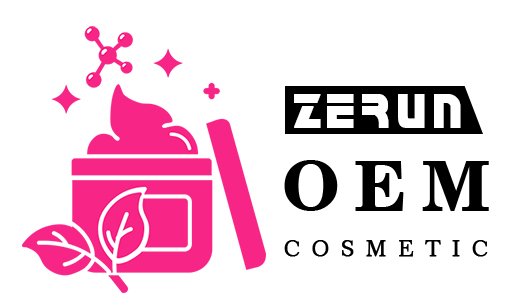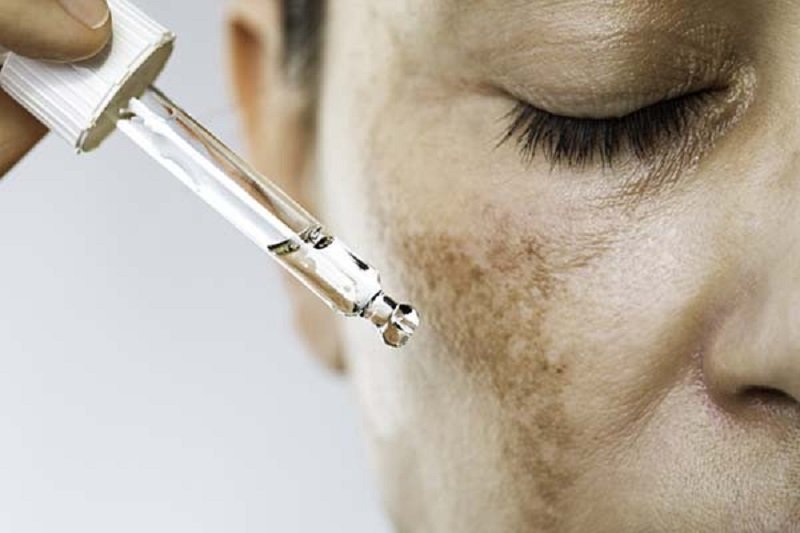Are those stubborn dark patches on your skin refusing to budge, no matter what you try? You’re definitely not alone. Hyperpigmentation is a widespread concern that can zap your confidence, making you feel self-conscious about your skin’s uneven tone. It’s tricky because the causes vary—from everyday sun exposure to post-acne inflammation—so finding the right fix can feel like chasing a moving target.
Hyperpigmentation occurs when the skin overproduces melanin, resulting in dark spots or patches. Common triggers include UV exposure, hormonal changes, and inflammation from acne. Consistent use of sunscreen, brightening ingredients (like vitamin C and niacinamide), and healthy habits can gradually fade existing discoloration and help prevent new spots from forming.
Hyperpigmentation And Why It Occurs
Hyperpigmentation happens when skin cells produce too much melanin, often triggered by UV rays, hormonal fluctuations, or post-inflammatory responses like acne. This leads to dark patches that can appear on various parts of the body.
Hyperpigmentation
- What is Hyperpigmentation
- Melanin is produced by cells known as melanocytes, located in the basal layer of the epidermis (the skin’s outermost layer).
- It acts as a natural defense against ultraviolet (UV) radiation by absorbing and dispersing the harmful rays, helping to protect deeper layers of the skin.
- Overproduction of Melanin
- When melanocytes go into overdrive—often due to sun exposure or internal factors—they create concentrated clusters of pigment that appear as darker patches on the skin’s surface.
- This can happen gradually or suddenly, depending on what’s triggering the melanocytes.
- Genetic Influence
- Some people are genetically more predisposed to developing hyperpigmentation. For instance, individuals with darker skin tones have more active melanocytes, making them more prone to issues like post-inflammatory hyperpigmentation (PIH).
- Genes may also influence how the body responds to hormones, which can tie into specific conditions like melasma.
Common Triggers and Contributing Factors
- Sun Exposure
- Leading Contributor: Dermatological surveys often cite unprotected sun exposure as the number one culprit behind new or worsening hyperpigmentation.
- Cumulative Effect: Even minimal daily sun exposure can add up over time, causing subtle changes in pigmentation that become more noticeable with age.
- Hormonal Changes
- Melasma (Chloasma): Commonly linked to hormonal fluctuations, such as those occurring during pregnancy or when using contraceptives. This type of hyperpigmentation often appears in symmetrical patches on the face.
- Thyroid Disorders and Other Hormonal Imbalances: Conditions affecting the endocrine system may lead to irregular melanin activity, resulting in patches that can be challenging to fade.
- Inflammation and Trauma
- Post-Inflammatory Hyperpigmentation (PIH): Occurs when a wound, acne lesion, or any type of skin inflammation triggers excess melanin production during the healing process.
- Higher Risk in Darker Skin Tones: The more active your melanocytes, the more likely it is that inflammation (like a pimple or burn) can leave dark marks behind.
- Medications and Chemicals
- Certain drugs (e.g., some chemotherapy agents, antimalarial medications, or even topical products) can increase your skin’s sensitivity, leading to pigment changes.
- Harsh skincare products or incorrect chemical peel use can exacerbate inflammation, inadvertently causing or worsening hyperpigmentation.
- Lifestyle Factors
- Stress: Chronic stress elevates cortisol, which can disrupt other hormones and potentially worsen melanin imbalance.
- Diet: While diet alone may not cause hyperpigmentation, nutritional deficiencies or high-glycemic diets can contribute to more frequent breakouts, indirectly leading to PIH.
- Lack of Sleep: Poor rest can impair the skin’s ability to repair itself, making existing hyperpigmentation harder to fade.
Types of Hyperpigmentation
- Post-Inflammatory Hyperpigmentation (PIH)
- Definition: Dark spots left behind after skin trauma (acne, cuts, eczema, or rashes).
- Appearance: Can look like flat brown or black patches, typically fading slowly over time with proper care.
- Melasma (Chloasma)
- Definition: Often hormonally driven and characterized by larger, symmetric patches of discoloration on the cheeks, forehead, or above the lip.
- Triggers: Pregnancy (sometimes called the “mask of pregnancy”), birth control pills, or hormonal therapies. Sun exposure often worsens melasma.
- Sunspots or Solar Lentigines (Age Spots)
- Definition: Small, flat, and typically tan, brown, or black spots on skin exposed to the sun for many years (face, shoulders, hands).
- Prevalence: Common in middle-aged or older adults but can appear in younger individuals who have significant sun exposure without protection.
- Freckles (Ephelides)
- Definition: Small, flat spots that are usually genetic and become more pronounced with sun exposure.
- Note: Freckles are not always seen as an unwanted form of hyperpigmentation; some people consider them endearing. However, the mechanism—melanocytes producing extra pigment—is similar.
The Science Behind Hyperpigmentation
- Inflammatory Response:
- When the skin is irritated—by UV rays, breakouts, or chemicals—immune cells release molecules that stimulate melanocytes, leading to localized overproduction of pigment.
- Oxidative Stress:
- Free radicals generated by pollution, stress, and other environmental factors can damage cells, indirectly triggering more melanin production as the skin tries to protect itself.
- Barrier Compromise:
- If the skin’s protective barrier is weakened (through over-exfoliation, harsh treatments, or dehydration), it becomes more susceptible to inflammatory triggers. This heightened vulnerability can lead to prolonged or worsened hyperpigmentation.
- Hormonal Pathways:
- For conditions like melasma, estrogen and progesterone can increase melanin synthesis. Elevated hormone levels may upregulate the tyrosinase enzyme—key to pigment formation—increasing the risk of dark spots.
Key Insights And Practical Takeaways
- Prevention Over Correction:
- Sunscreen First: Daily use of broad-spectrum SPF 30 or higher is your single most effective defense. Studies show consistent sunscreen application can prevent the formation of new dark spots and stop existing ones from getting darker.
- Protective Clothing: Wide-brimmed hats, UV-blocking sunglasses, and sun-protective clothing reduce constant UV exposure.
- Identify Your Type:
- Knowing if you’re dealing with melasma, PIH, or age spots helps you tailor your approach, as each type may respond differently to ingredients and treatments.
- Lifestyle Matters:
- Diet, sleep, and stress management all play supportive roles. While they won’t “cure” hyperpigmentation, they create an optimal internal environment for skin healing.
- Consistency And Patience:
- Skin Cell Turnover: Most people see noticeable changes within 8–12 weeks of a dedicated routine, sometimes longer for deeply seated pigmentation.
- Gentle Yet Persistent: Overdoing it with harsh products can inflame the skin, ironically leading to more pigmentation issues.
- Professional Guidance:
- For stubborn or severe cases, a dermatologist’s insight—possibly combined with in-office treatments like chemical peels, laser therapy, or microdermabrasion—can provide more dramatic improvements.
Frequently Asked Questions
- Can Hyperpigmentation Disappear On Its Own?
- Mild PIH often fades naturally over time, especially if you’re vigilant about sun protection. However, more persistent forms (like melasma) typically require targeted skincare or professional treatments.
- Why Are Darker Skin Tones More Prone?
- Darker complexions have higher baseline melanin activity, which means any trigger—sun, breakouts, or even mild irritation—can result in noticeable pigment changes.
- Is Hyperpigmentation Permanent?
- Not necessarily. Many forms can lighten significantly with the right approach. However, it can return if you don’t maintain consistent sun protection or address underlying triggers.
Which Ingredients Are Most Effective For Reducing Discoloration
Key actives include niacinamide, kojic acid, arbutin, and vitamin C. Each works to slow pigment production or gently lift existing dark spots, unveiling a brighter, more uniform complexion.
Spotlight On Niacinamide
- How It Works: Niacinamide (a form of vitamin B3) helps regulate sebum production and slows the transfer of pigment from melanin-producing cells to the surface of the skin.
- Why People Love It: It’s considered stable, generally well-tolerated, and can also help with redness and uneven texture.
- Data Insight: Research shows that consistent application of around 5% niacinamide may result in noticeable fading of discoloration within eight to twelve weeks.
Taking A Closer Look At Kojic Acid
- Origin: Derived from certain types of fungi, most notably used in the fermentation of sake (Japanese rice wine).
- Mechanism: Kojic acid inhibits tyrosinase, an enzyme critical to melanin production.
- Potential Pitfalls: Some users report irritation, so it’s wise to introduce it gradually and monitor your skin’s response.
Arbutin And Its Derivatives
- Natural Hydroquinone Alternative: Arbutin, often found in bearberry leaves, works similarly to hydroquinone but is considered milder with fewer side effects.
- Multiple Forms: You may see alpha-arbutin and beta-arbutin in different skincare formulas. Alpha-arbutin is generally more stable and effective.
Does Vitamin C Help With Hyperpigmentation
Yes. Vitamin C is a powerful antioxidant that can help brighten skin, reduce melanin formation, and shield cells from damage, making it a solid option for fading dark spots.
Why Vitamin C Is A Game-Changer
- Antioxidant Armor: By neutralizing free radicals, vitamin C prevents cellular damage that can deepen hyperpigmentation.
- Collagen Support: Bonus perk—vitamin C encourages collagen synthesis, which can improve overall skin texture while it works on discoloration.
- Synergy With Other Actives: It pairs well with ingredients like vitamin E and ferulic acid to boost stability and effectiveness.
Choosing The Right Form
- L-Ascorbic Acid: The purest form and widely studied, yet it can be unstable and irritating in higher concentrations.
- Derivatives: Look for sodium ascorbyl phosphate or magnesium ascorbyl phosphate if you have sensitive skin; they’re gentler and often more stable.
Usage Guidelines
- Concentration: Aim for products containing between 10% and 20% vitamin C for noticeable results.
- Packaging: Vitamin C degrades with light and air, so opt for opaque or airless containers whenever possible.
Vitamin C is a great ally, but not a cure-all on its own. Pair it with other brightening agents—like niacinamide—for a more holistic plan. And don’t forget daily sunscreen, or you risk undermining any progress made.
How To Build A Daily Routine To Fade Dark Spots

Cleanse gently, apply targeted brightening serums, moisturize well, and never skip sunscreen. Consistency over a few months is key for visible improvement.
Morning Routine Blueprint
- Mild Cleanse: Start your day by washing away overnight oil and bacteria without stripping your skin’s moisture barrier.
- Brightening Serum: Pick your star player—vitamin C, niacinamide, or both—to tackle stubborn patches.
- Hydrating Moisturizer: Lock in hydration with a cream or lotion tailored to your skin type.
- Sunscreen Is Non-Negotiable: A broad-spectrum SPF 30 (or higher) wards off UV damage that can worsen dark spots.
Evening Routine Blueprint
- Double Cleansing: If you wear makeup or a heavier sunscreen, begin with an oil-based cleanser, then follow with a gentle water-based formula.
- Exfoliation Or Active Treatments: Incorporate AHA, BHA, or retinol a couple of times a week to nudge faster cell turnover.
- Nourishing Cream: Seal in your treatments and help repair the skin’s barrier while you sleep.
| Routine Stage | Recommended Actions | Suggested Ingredients | Frequency |
|---|---|---|---|
| Morning: Cleanse | Use a gentle, low-pH cleanser | Aloe vera-based or ceramide-rich | Daily |
| Morning: Serum | Apply brightening or antioxidant | Vitamin C, niacinamide | Daily |
| Morning: Moisturize | Lock in hydration | Hyaluronic acid, squalane | Daily |
| Morning: Sunscreen | Protect from UV damage | SPF 30 or higher, broad-spectrum | Daily (reapply) |
| Evening: Double Cleanse | Remove makeup & pollutants | Oil cleanser + mild foaming wash | Daily |
| Evening: Active Exfoliant | Boost cell turnover | Glycolic acid, lactic acid | 2–3 times weekly |
| Evening: Retinoid | Tackle uneven tone, texture | Retinol or retinaldehyde | 2–4 times weekly |
| Evening: Night Cream | Support barrier repair | Ceramides, peptides | Daily |
While layering can be beneficial, it’s easy to go overboard. If your skin shows signs of irritation—like redness, flaking, or increased sensitivity—pull back on active ingredients and focus on soothing, hydrating products until things calm down.
Are Professional Treatments Helpful
Absolutely. Treatments like chemical peels, laser therapy, and microdermabrasion can give more dramatic or quicker improvements when combined with a solid at-home routine.
Chemical Peels
- Light Or Medium Peels: Use acids like glycolic or salicylic to resurface the top layer of skin. They can lighten shallow spots and reduce the appearance of fine lines.
- Deep Peels: More intensive and often require downtime. Best for severe cases but come with higher risks, including potential scarring.
Laser Therapy
- Intense Pulsed Light (IPL): Sends pulses of light into the skin to break up pigment clusters.
- Fractional Lasers: Create micro-injuries that trigger a healing response, helping to replace discolored skin cells with new ones.
- Potential Downsides: Sessions can be pricey, and laser technology may not be suitable for deeper skin tones unless performed by a highly experienced professional who understands the nuances of melanin-rich skin.
Microdermabrasion
- Mechanical Exfoliation: Uses a specialized device to slough off the surface layer of dead cells.
- Mild But Cumulative Results: Generally requires multiple sessions to see a real difference in skin tone.
- Aftercare: Sun protection and gentle moisturizers are a must to avoid irritation or rebound hyperpigmentation.
Professional interventions can be game-changing, but they’re not silver bullets. Your at-home regimen supports and maintains the benefits you gain from in-office sessions, which is why consistency remains so important.
Do Lifestyle Factors Influence Hyperpigmentation

Yes. Stress, poor diet, and lack of sleep can all impede your skin’s ability to heal and regenerate, potentially intensifying dark spots and prolonging their stay.
The Diet Factor
- Antioxidant-Rich Foods: Fruits and vegetables—especially berries, citrus fruits, and leafy greens—provide vitamins that help shield cells from oxidative stress.
- Dairy And Sugar: Some people find breakouts worsen when they consume excessive dairy or sugar, possibly leading to more PIH if acne flares up.
- Hydration Matters: Drinking enough water won’t magically clear dark spots, but adequate hydration supports overall skin elasticity and health.
Stress And Sleep
- Cortisol Surge: Prolonged stress elevates cortisol levels, which can prompt inflammation and disrupt skin repair processes.
- Importance Of Rest: Deep sleep is when your body ramps up cell turnover and tissue repair, crucial for gradual fading of hyperpigmentation.
- Insomnia Loop: Sleeping poorly can make you more stressed, fueling a cycle that affects not just mood but also skin clarity.
Hormonal Fluctuations
- Medical Conditions: Thyroid issues, PCOS, or elevated estrogen levels can exacerbate melasma or other pigmentation problems.
- Seek Expert Advice: If you suspect hormonal imbalances are at play, consulting an endocrinologist or gynecologist can be a game-changer.
Lifestyle doesn’t replace topical treatments, but it forms the foundation. Think of your daily habits as the bedrock that lets active skincare ingredients do their best work.
Is There A Correct Way To Prevent Discoloration
Yes. Diligent sun protection, a stable skincare routine with gentle exfoliation, and a well-maintained skin barrier are key to preventing future dark spots from developing or intensifying.
Sun Protection as Your First Line of Defense
- Use Broad-Spectrum Sunscreen Daily
- What to Look For: A broad-spectrum sunscreen shields against both UVA (linked to deeper skin damage) and UVB (linked to surface burns) rays. Choose a minimum of SPF 30, though many dermatologists recommend going higher, especially if you’re prone to discoloration.
- Application Tips: Apply sunscreen generously on all exposed areas, including your neck, ears, and the back of your hands—places often overlooked but prone to dark spots. Reapply roughly every two hours, or more frequently if you’re swimming or sweating.
- Protective Clothing and Accessories
- Hats and Shades: A wide-brimmed hat and UV-protective sunglasses can significantly cut down on facial UV exposure, which is a prime trigger for hyperpigmentation.
- UPF Clothing: Specialized garments rated with an Ultraviolet Protection Factor (UPF) are increasingly popular for outdoor activities. They block varying percentages of UV rays, adding another layer of defense.
- Indoor Awareness
- Windows and UVA Rays: Even if you’re indoors, UVA rays can penetrate through glass. If you spend long hours near windows, consider a sunscreen reapplication schedule or UV-protective window films to keep your skin safe.
Sun protection is non-negotiable. If you skip this foundational step, other brightening products or treatments might only offer temporary results, as the underlying trigger (UV exposure) remains unaddressed.
Gentle Exfoliation and Consistent Renewal
- Why It Matters
- Cell Turnover: Mild exfoliation accelerates the shedding of pigmented cells, gradually reducing the visibility of dark spots.
- Improves Product Penetration: Removing the surface layer of dead skin allows brightening agents to reach deeper and work more effectively.
- Frequency and Method
- Chemical Exfoliants: Alpha hydroxy acids (AHAs) like glycolic or lactic acid, and beta hydroxy acids (BHAs) like salicylic acid can help loosen dead cells without the harsh friction of a scrub.
- Physical Scrubs: If you prefer granular scrubs, opt for gentle formulas with finely milled particles to minimize irritation.
- Schedule: Most people do well with 2–3 light exfoliation sessions per week. Overdoing it can inflame skin, triggering more pigment production.
- Layering with Care
- Avoid Over-Exfoliation: Too many exfoliants (or combining strong AHAs, BHAs, and retinoids daily) can compromise the skin barrier and lead to redness or post-inflammatory hyperpigmentation (PIH).
- Watch for Signs of Irritation: If you notice increased sensitivity or peeling, scale back immediately to let your skin recover.
Strengthening and Maintaining the Skin Barrier
- Barrier-Focused Ingredients
- Ceramides and Hyaluronic Acid: Both help retain moisture and reinforce the barrier, making the skin less prone to irritation and inflammation—two prime triggers for discoloration.
- Peptides and Niacinamide: Encourage collagen production and offer a soothing effect, respectively, giving skin resilience against external stressors.
- Hydration Basics
- Gentle Cleansers: Avoid harsh detergents (like sulfates) that strip away natural oils, as dryness can spark inflammatory cycles leading to more pigment formation.
- Avoid Hot Water: Extremely hot showers or face washing can dehydrate skin, undermining barrier function and fostering conditions that worsen discoloration.
- Lifestyle and Diet Interplay
- Internal Hydration: Drinking enough water supports overall cell function, though it’s not a standalone solution for hyperpigmentation.
- Nutrient-Rich Foods: Diets high in antioxidants (like vitamin C, E, and polyphenols) may help the skin defend against oxidative stress, indirectly lowering the risk of new hyperpigmentation.
Managing Inflammation from the Inside Out
- Hormonal Balance
- Medical Check-ups: Conditions such as thyroid disorders or elevated estrogen levels can spur melasma or other hormonal hyperpigmentation. Consulting with healthcare professionals to manage hormonal imbalances can be pivotal.
- Contraception Considerations: Certain birth control pills can exacerbate melasma. A dermatologist or gynecologist might suggest alternative contraceptive methods if hyperpigmentation is a persistent issue.
- Stress Reduction
- Cortisol Connection: Chronic stress elevates cortisol, potentially increasing inflammation and speeding pigment production.
- Mind-Body Techniques: Activities like yoga, meditation, or even regular walks can help stabilize stress hormones, supporting the skin’s natural healing processes.
- Acne and Other Skin Conditions
- Preventing PIH: Controlling acne breakouts can drastically reduce post-inflammatory hyperpigmentation. Seek treatments that calm skin without causing undue irritation (e.g., non-comedogenic or gentle formulas).
- Prompt Treatment: The sooner you address inflammation, the less likely it is to evolve into stubborn dark spots.
Smart Ingredient Pairings and Routine Consistency
- Brightening Agents
- Top Contenders: Vitamin C, niacinamide, arbutin, and kojic acid.
- Why Pair Them: These ingredients can work synergistically—niacinamide is great for barrier support while vitamin C tackles discoloration and oxidative stress.
- Avoiding Product Overload
- Minimalist Approach: Too many actives can overwhelm the skin, leading to irritation that backfires and creates more discoloration.
- Patch Testing: Always patch-test new products, especially stronger formulations like peels or retinoids, to prevent surprises.
- Sticking to a Schedule
- Patience is Key: Visible improvements often take 8–12 weeks. Inconsistency—skipping sunscreen or dropping brightening serums sporadically—slows progress.
- Tracking Tools: Photos or skincare journals can help you see gradual changes and motivate you to maintain protective habits.
| Strategy | Action | Why It Helps |
|---|---|---|
| Sun Protection | Use broad-spectrum SPF, wear hats | Shields skin from UV-induced melanin |
| Gentle Exfoliation | Opt for mild AHAs/BHAs 2–3x weekly | Speeds up cell turnover, preventing buildup |
| Barrier Support | Hydrate with ceramides, HA | Reduces irritation that triggers pigment |
| Manage Inflammation | Control stress, acne, and hormones | Minimizes melanin overproduction |
| Smart Ingredient Use | Pair brightening actives, avoid overdoing | Maintains consistency without barrier damage |
| Lifestyle Factors | Balanced diet, enough sleep, minimal stress | Supports overall skin healt |
How To Track Progress And Maintain Results
Document changes through photos or a skincare journal, adjust products as needed, and keep professional check-ups in mind if you’re not seeing improvements.
Monitoring Your Journey
- Photo Comparisons: Aim for consistent lighting and angles weekly or biweekly. Sometimes the gradual progress is easier to see in pictures than in your reflection.
- Product Log: Track the date you started a new serum or cream, how often you use it, and any reactions. This helps pinpoint what truly works.
Knowing When To Level Up
- Bumping Up Actives: If your skin handles low-strength formulas well for a month or two, you might upgrade to higher concentrations for a stronger effect.
- Pulling Back: If redness, dryness, or breakouts occur, reduce the frequency or potency until the skin recalibrates.
Staying Connected With Professionals
- Dermatologist Visits: A board-certified dermatologist can offer insights tailored to your skin’s needs and might recommend combination therapies for stubborn pigmentation.
- Allied Experts: Nutritionists, endocrinologists, or mental health professionals can address underlying conditions that fuel hyperpigmentation, like hormonal imbalances or chronic stress.
Hyperpigmentation is a marathon, not a sprint. Even when you see improvements, consistent skincare and routine check-ins help preserve your progress over the long haul.
Conclusion
Treating hyperpigmentation is a balancing act of choosing the right products, maintaining healthy habits, and protecting your skin from further damage. Consistency is key—whether you’re applying a topical cream, following up on professional procedures, or simply wearing sunscreen every day. Give your skin the tools it needs, and in time, you’ll likely see a smoother, brighter complexion.
If you’re considering crafting your very own line of hyperpigmentation-focused skincare, Zerun Cosmetic Factory is ready to assist. We specialize in developing formulas that target dark spots effectively, offering free design services and samples to ensure your products stand out. Reach out today, and let’s work together to create high-quality skincare solutions that deliver real, visible results.





